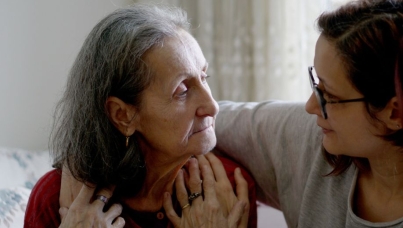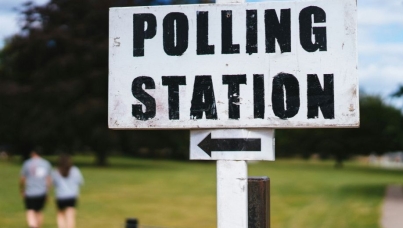The State Of The Economy
When terrorists attacked the World Trade Center and the Pentagon on 11 September, economic optimism in Britain fell sharply: the MORI Economic Optimism Index (EOI) in our late-September poll for The Times hit -56, its lowest level for more than twenty years. It is perhaps surprising that barely half a year later all discussion of this year's budget should be concerned with the popularity of its taxation measures and not with its macroeconomic effects.
But, six months on from September 11, economic optimism has recovered and stabilised, at -21 in the March MORI Monitor survey and -22 in the MORI Financial Services (MFS) April Mood of the Nation Index survey. There has been little need to judge the budget as an economic panacea because the anticipated economic meltdown simply hasn't occurred. Britain seems, already, to have heaved its collective sigh of relief and gone back to business as normal.
But not everybody has shaken off their pessimism to the same degree, and if we compare the September figures with the March MORI Monitor figures some very interesting patterns have developed in the detailed breakdown of public opinion on the economy.
In September, it was middle-class Britons who were most pessimistic. The index for ABs (which is calculated by subtracting the percentage expecting the state of the economy to get worse over the next 12 months from the percentage expecting it to improve) was -65; for C1s it was -63, C2s -55 and for DEs a somewhat less gloomy -47. But by the end of last month the position had been reversed with ABs (-7) now more optimistic than C1s (-20), in turn happier than the C2s (-25) and most apprehensive of all the DEs (-30). Whereas the index for ABs rose by 58 points, representing a 29% swing, for DEs the improvement was only 13 points, or a 6.5% swing.
Similarly, and no doubt for related reasons, optimism has recovered much more sharply among readers of broadsheet newspapers than of tabloids. Six months ago, readers of broadsheets (-63) and middle-market dailies (-66) were more pessimistic than readers of "red-tops" (-49); but the broadsheet index increased by 57 points to -6, whereas the middle-market readers became more optimistic by only 36 points raising their index to -30, close to that of the popular press (we must stop calling them red-tops now the Daily Mirror has changed colour!) on -24, up only 25.
Just as striking is the behaviour of London. In September the index for residents of the capital was -52, not far from the national figure, and only a little higher than that for the South-East outside London, -61. But in the March monitor, the South East remained fairly pessimistic, with an EOI of -26, whereas the balance in London was into the black, +2.
But interesting as these patterns are, they are not the whole story. It is true that September 11 had a sharp effect on economic optimism, but it was already on a downwards trend before that, with widespread talk of an impending recession during the summer. The EOI fell 25 points between late August and late September, during which period the terrorist attacks took place; but it had already fallen 27 points between the post-election euphoria of late June and August. The September 11 attacks affected the opinions of some groups far more than others, and this needs to borne in mind when considering how quickly that effect has faded.
For example, the September fall in the index for ABs was only 18 points, much less than for C1s (down 30) and C2s (down 31) - not because fewer ABs were shocked by September 11 and its possible effects, but because more of them were pessimistic about the future already, having had a 41-point drop in their optimism index since June. Interestingly, this pattern was not echoed by the changes in attitudes of readers of different classes of newspaper. It does not seem to have been related, as we might surmise in some circumstances, to readers of the heavier papers being more conscious of the likely economic impact of world events, or of the earlier talk of a looming recession.
One clue is that the optimism of share owners fell sharply between June and August (from -2 to -42), that of non-share-owners much less so (-5 to -27). Between August and September, on the other hand, share ownership does not seem to be closely related to the fall in optimism, which was similar in both groups. In the six months since September, the (relative) bullishness of the share holders has re-asserted itself, and the two groups are now once again, as they were in June, similarly inclined in their views on economic prospects. Those more aware of or more in tune with the movements of the markets have been more volatile in their opinions, but it doesn't seem to be related to the September 11 attacks.
Another curiosity is that women are now significantly more pessimistic about the economy than men. This was not the case in June, when the index for men was -5 and for women -3; but from June to August, and again from August to September, the women's EOI fell a little more than the men's, and since September it has recovered less well, so that now the figure for men is -11 and for women -30. Older age groups are now also somewhat more pessimistic than the young, and part-time workers much more so than full-time workers (probably related to the pessimism of women, but which factor is the cause and which the effect is not clear).
MORI Economic Optimism Index*
|
|
||||||||||||||||||||||||||||||||||||||||||||||||||||||||||||||||||||||||||||||||||||||||||||||||||||||||||||||||||||||||||||||||||||||||||||||||||||||||||||||||||||||||||||||||||||||||||||||||||||||||||||||||||||||||||||||||||||||||||||||||||||||||||||||||||||||||||||||||||||||||||||||||||||||||||||||||||||||||||||||||||||||||||
|
Source: MORI Base: c. 1,000 British adults aged 18+ * Question wording: "Q. Do you think that the general economic condition of the country will improve, stay the same or get worse over the next 12 months?" Index = % "improve" minus % "get worse". Finally, there are two political implications that arise from the figures. The first is that Labour supporters put some degree of economic trust in the government: in all four surveys the EOI for those who say they would vote Labour is significantly higher than for Conservatives or Lib Dems. There is no surprise there, of course; EOI is usually higher among supporters of government than of opposition. But on the other hand there is a warning for the government in that the pessimism of trade union members seems worse than that of non-union members. The gap is not, strictly, statistically significant, but it would be unwise to ignore it on that account since, if it reflects a real difference in attitudes it might be an important one. There have been increasing signs in recent months that the possibility of a major confrontation between the government and the unions is a real one; if union members, unlike other Labour supporters, have no particular confidence in the government's handling of the economy, it does nothing to diminish the risk. |
160 | 160 | ||||||||||||||||||||||||||||||||||||||||||||||||||||||||||||||||||||||||||||||||||||||||||||||||||||||||||||||||||||||||||||||||||||||||||||||||||||||||||||||||||||||||||||||||||||||||||||||||||||||||||||||||||||||||||||||||||||||||||||||||||||||||||||||||||||||||||||||||||||||||||||||||||||||||||||||||||||||||||||||||||||||||



